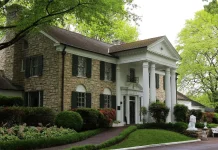Francis Scott Key was born in Frederick County on August 1, 1779. He was an American lawyer, author, and amateur poet, and, after moving to Washington, D.C., became a district attorney. He was best known as the author of the text of the U.S. national anthem.
The Star-Spangled Banner
Key witnessed the bombardment of Fort McHenry by the British during the War of 1812. He wrote a poem, “Defence of Fort M’Henry”, after seeing the American flag still flying over the fort at dawn. A week later, it was published with the suggestion of the popular song “To Anacreon in Heaven”. Key’s lyrics became recognized as “The Star-Spangled Banner” and gradually gained fame as an unofficial national anthem before being made official by President Herbert Hoover over a century later.

Onthe British return to their vessels after Washington’s capture, they carried with them Dr. Beanes, an influential and well-known Upper Marlboro physician. His friends begged for his release, but Admiral Cockburn refused to give him up and sent him on board Admiral Cochrane’s flagship. Key, then a resident of Georgetown, well known for his affablemanners, was requested to travel to Cochrane as a solicitor for the doctor’s release.
He consented, and the President granted him permission. In company with John S. Skinner, a well-known citizen of Baltimore, he traveled aboard the cartel ship Minden, under a flag of truce. They found the British ships at the Potomac mouth, preparing to attack Baltimore.
Cochrane negotiated the doctor’s release. He consented, and the President granted him permission. In company with John S. Skinner, a well-known Baltimore citizen, he went in the cartel- ship Minden, under a truce flag. They found the British ships at the Potomac mouth, preparing to attack Baltimore.
They were placed on board the Surprise, where they were courteously treated. As the fleet traveled up Patapseo Bay, marines were sent back with them to prevent landings and provide information to their countrymen. The Minden was anchored within sight of Fort McHenry, and from her deck, the three friends observed the fierce bombardment of the fort that soon ensued. It ceased before September 14, 1814.

The anxious Americans did not know whether the fort surrendered. They awaited daylight’s appearance with painful suspense. In the dim light of the opening morning, they saw through their glasses the star-spangled banner still waving in triumph over the fort. They soon learned the fate of the land expedition against Baltimore and the preparations of the discomfited British for a speedy departure.
When the fleet was ready to sail, Key and his friends were released and returned to the city. It was during the excitement of the bombardment, and when pacing the Minden deck between midnight and dawn, that Key composed the popular song, The Star-Spangled Banner. The first stanza expresses the feelings of thousands of eyewitnesses to the scene and is reproduced on the preceding page from the original manuscript.
This song’s rude content was written on the back of a letter key he had in his pocket. On the night after his return to Baltimore, he wrote it out in full and read it to his uncle, Judge Nicholson, one of the defenders of the fort, and asked his opinion of it. The pleased judge took it to the printing office of Capt. Benjamin Edes, and printed it in handbill form. Samuel Sands typed the song, published it, and distributed it among citizens.
It was first sung by Charles Durang, at a restaurant next door to the Holliday Street Theater, Baltimore, to an assemblage of patriotic defenders of Baltimore. It was sung nightly at the theater and everywhere in public and private. A collection of his poems was published after his death, on 11 January 1843 in Baltimore, Maryland at 60.
Read More – The Rise and Fall of Napoleon







